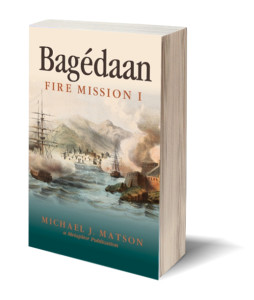Raven Wing
Long before the Treaty of Amiens, long before the IMMC was a name on anyone's lips, there was "K Street". It was just a manor house on a small estate at the end of K Street, off of what was then North Bay Drive. It's now known as Admiral Dunn Way, and is the road leading from the main gate of the International Merchant Marine Base, off of Telladi-Pelletier Boulevard. K Street is now Headquarters Circle, and the manor house is long gone, it's foundations buried under hundreds of tons of paving stones and the massive, brown stone edifices that house the IMMC general staff campus.
A Brief History of K Street
In 468 things were very different. On the one hand, the Kingdom of Cascadia was riding high. The economy was booming. The Nadrean Era was at its glorious peak, both culturally and architecturally; but the bloom was slowly beginning to fade. The Empire was crumbling, right under Cascadia's nose, and at a time when Cascadians' love for their queen had given two generations of her subjects a particular affection for the country of her birth. Internally, the royal government was growing concerned. K Street was King Altheon's first attempt to understand the Confederation's military machine, so that Cascadia could begin making what his majesty believed would be a necessary shift in the kingdom's economy and resources to a wartime footing.
The K Street staff was mostly made up of generals from the armies of the peers. The duchy of Crowley's frontier border stretched for hundreds of kilometers. The duchy of Enselford too, had a long frontier border. The generals were very familiar with the tactics of goblins, wyvern, and their most common opponent: the common orc. But the cadre the Confederation was using was something new, a war orc; and its weaponry and tactics were unlike anything seen before. They were using magic on the battle field in ways never before encountered, and there were reports of war orcs that could fly!
By 470 the generals had seen enough to know that, as soon as the Empire fell, southern Sylantia would be targeted. Far more warlike their their southern neighbors, the generals postulated that the Confederation would have a much harder time of it in Vin-Llamáz and Surmeidän, the two southern most kingdoms, but without Cascadian aid, they too would likely fall. And Cascadia was no where near ready to fight a war abroad.
For the next ten years, K Street's importance would grow, as would its size. By the dawn of the sixth century, K Street was a full on international think tank that had absorbed some of the best minds from Sudaan and Vin-Llamáz both. Flying war orcs were indeed a reality. As the war along the the northern Vin-Llamázi border heated up, the Confederation was using the flying orcs to drop ceramic shelled containers that burst into flame on impact, from well above the reach of archers arrows. Flying war orcs dropping fire bombs had turned what should have been the first easy victory for the humans into a bloody stalemate. Medini courage in the form of Vin-Nôrëan and Par-Isen steel were the only things holding the Confederation back, and that was something that had to change.
The Raven Wing Project
Thus opened the royal coffers for research into human flight, and one of the first major branches of research was the Raven Wing Project. One of two initial lines of research into human flight, and the use of "blue collar magic", as magitech was then known, the project's mission was "...to produce a magically enhanced magical device that would allow any human to, with training, fly or glide a significant distance, carrying aloft a payload of at least twelve kilos."
As Vincent discovered in his research,1 it was a project doomed to failure. After ten years, the best the research team could produce was a very expensive glide wing. It was an efficient glide wing, so efficient, in fact, that officers quickly deployed them for reconnaissance missions over battle areas. After launchers were produced, early IMMC fleet commanders used them to patrol the skys around their fleets, giving them plenty of warning against approaching pirate, or Confederation vessels. But those early launchers were bulky, expensive, and dangerous.
The Confederation soon provided an even more pointed lesson in the limitations of a glide wing. They started arming some of their war orc flyers with cavalry lances. The first Raven Wings weren't armored at all. Designed to keep the operator aloft as long as possible (forever, if one understood air currents and how to use them), even under a load, the trade off for all that lift was maneuverability. Unable to out maneuver a war orc lancer (as they quickly became known), and unarmored, casualties quickly began to mount. The research team quickly dove back into their labs to armor up the Raven Wing.
Though Vincent doesn't know it, his grandfather's Raven Wing was only the 3rd produced with the new armoring, and as his own research showed, only two thousand total would be built before the entire project was officially abandoned. The alchemical manufacturers would continue to produce them privately, on a commission basis for another ten years, but the Raven Wing Project was officially closed, and the resources shifted into the growing field of human powered flight.
- See chapter 4 of Dead Man's Trigger. ↵
